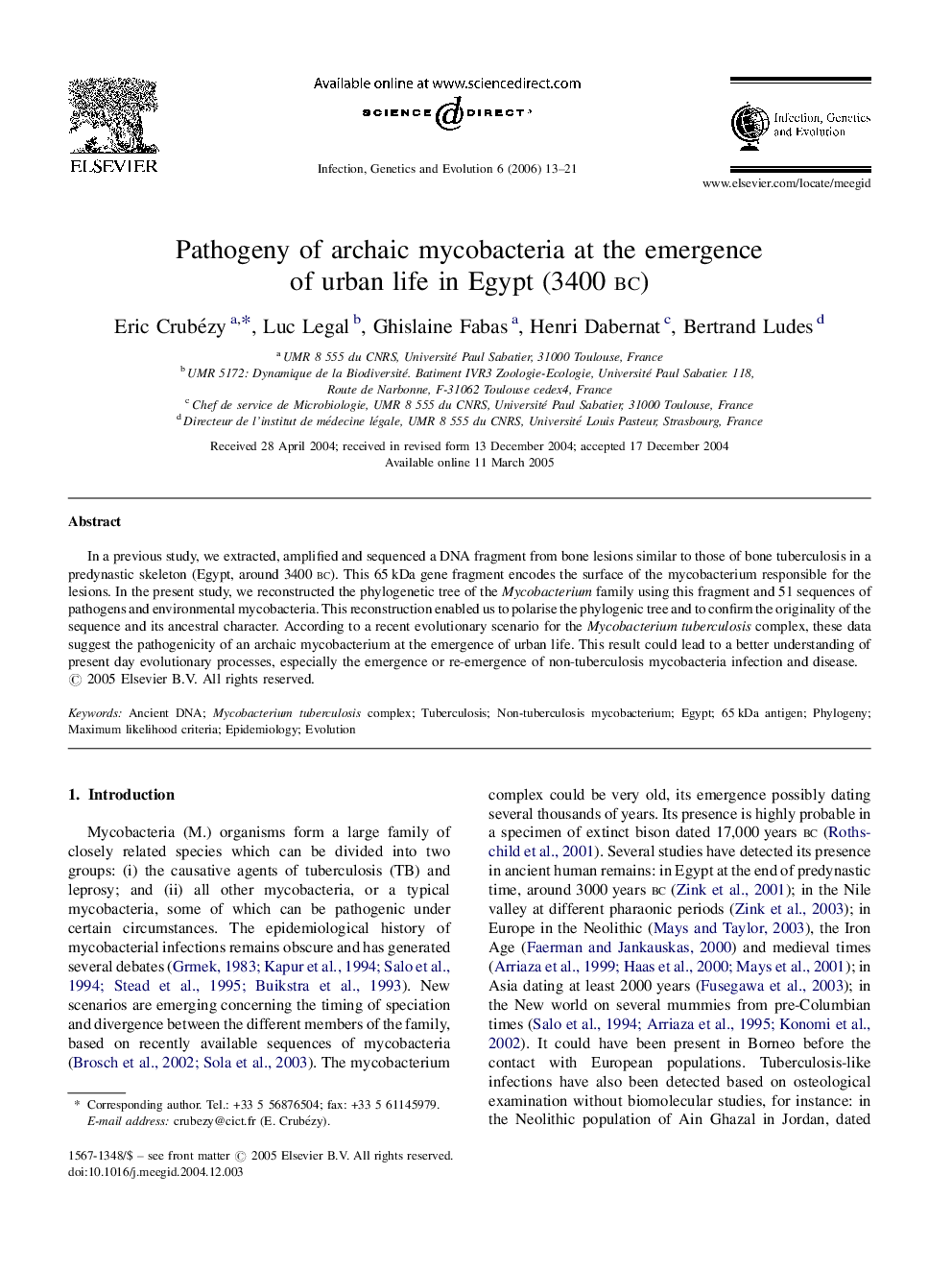| Article ID | Journal | Published Year | Pages | File Type |
|---|---|---|---|---|
| 2823768 | Infection, Genetics and Evolution | 2006 | 9 Pages |
In a previous study, we extracted, amplified and sequenced a DNA fragment from bone lesions similar to those of bone tuberculosis in a predynastic skeleton (Egypt, around 3400 bc). This 65 kDa gene fragment encodes the surface of the mycobacterium responsible for the lesions. In the present study, we reconstructed the phylogenetic tree of the Mycobacterium family using this fragment and 51 sequences of pathogens and environmental mycobacteria. This reconstruction enabled us to polarise the phylogenic tree and to confirm the originality of the sequence and its ancestral character. According to a recent evolutionary scenario for the Mycobacterium tuberculosis complex, these data suggest the pathogenicity of an archaic mycobacterium at the emergence of urban life. This result could lead to a better understanding of present day evolutionary processes, especially the emergence or re-emergence of non-tuberculosis mycobacteria infection and disease.
